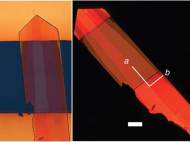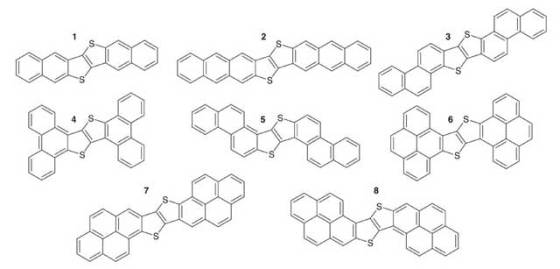Researchers develop faster organic semiconductors for flexible displays
 Organic semiconductors are suitable for application in thin film and flexible displays but they haven’t yet reached the speeds needed to drive high definition displays. A team of researchers, led by researchers from Stanford and Harvard universities, applied a logical approach in order to create a new material which is suitable for high-speed organic semiconductors.
Organic semiconductors are suitable for application in thin film and flexible displays but they haven’t yet reached the speeds needed to drive high definition displays. A team of researchers, led by researchers from Stanford and Harvard universities, applied a logical approach in order to create a new material which is suitable for high-speed organic semiconductors.
Instead performing a hit-or-miss process to find the suitable material, which requires large numbers of candidate materials and their testing, the team chose a computational predictive approach to substantially narrow the field of candidates before expending the time and energy to make any of them.
Due to good organic semiconductor characteristics, the researchers used a material known as DNTT as their starting point, then considered various compounds possessing chemical and electrical properties that seemed likely to surpass its performance.
“It would have taken several years to both synthesize and characterize all the seven candidate compounds. With this approach, we were able to focus on the most promising candidate with the best performance, as predicted by theory”, said Zhenan Bao, an associate professor of chemical engineering at Stanford University. “This is a rare example of truly ‘rational’ design of new high performance materials.”
After about a year and a half, the team managed to perfect the synthesis of the new compound and make enough of it to test. The modified material doubled the speed of the parent material. Compared to the amorphous silicon currently used for liquid crystal displays in products such as flat panel televisions and computer monitors, the new material is more than 30 times faster.
After proving practicality of their method in finding novel organic materials for electronics, the researchers plan to apply their method to the development of new, high-efficiency material for organic solar cells.
“In the case of renewable energy, we have no time for synthesizing all the possible candidates, we need theory to complement synthetic approaches to accelerate materials discovery”, said Alán Aspuru-Guzik, an associate professor of chemistry and chemical biology at Harvard University.
They are also developing more sophisticated theoretical models that go beyond the semiclassical regime, with the goal of bridging the gap between the predicted hopping-mechanism calculations and the measured mobility.
For more information, you can read the article published in the Nature Communications named: “From computational discovery to experimental characterization of a high hole mobility organic crystal”.










Leave your response!